Lower Attendance & Hotel Occupancy at Disney World
The Walt Disney Company has reported its third quarter fiscal year 2023 earnings, beating earning expectations and meeting revenue forecasts, but missing on Disney+ subscriber numbers. This covers the good & bad of these results as they related to Walt Disney World & Disneyland, and why despite the strong headline performance for parks, attendance and resort reservations are both down.
Disney Parks, Experiences and Products revenues for the quarter increased 13% to $8.3 billion. Higher operating results for the quarter reflected increases at primarily at the international parks, which were up 94%. This is mostly attributable to Shanghai Disneyland and, to a lesser extent, Hong Kong Disneyland. In the prior year quarter, Shanghai Disneyland was only open for 3 days…so an easy comparison explains almost all of that growth!
By contrast, the domestic Parks & Resorts underperformed comparatively. Even there, Disneyland and Disney Cruise Line continued to show strong results. That wasn’t the case for Walt Disney World or Disney Vacation Club, with the latter receiving a rare earnings call ‘shout out’ for lower unit sales. (Something we’ve known for a while–see our post from a few months ago on the Disney Vacation Club Sales Slump–but it’s interesting to hear the company acknowledge. That’s especially the case as the Villas at Disneyland Hotel are now on sale and several other projects move forward.) Then there’s Walt Disney World…
The company indicated that lower results for Parks & Resorts this quarter were mostly attributable to a decrease at Walt Disney World due to higher costs and lower volumes. In particular, lower volumes were “due to decreases in occupied room nights and attendance.” The increase in costs was attributable to inflation and accelerated depreciation related to the planned closure of Star Wars: Galactic Starcruiser, for which the company is taking a write-off of $300 million in the last two quarters of this fiscal year.
None of this is particularly surprising. We’ve been documenting the slowdown in crowds at Walt Disney World. This also isn’t the first, second, or even third time the company has directly addressed it and indicated that pent-up demand has been exhausted at Walt Disney World. No, the parks are not dead or ghost towns or totally empty, but they’re absolutely down year-over-year.
The parks are slower right now than they were at the same time last year. It’s undeniable and obvious. (I’m sorry if you encountered pockets of large crowds in the last few months, but there has been a drop.) Hopefully this convinces those who have claimed the parks are “busier than ever” otherwise.
We’ll circle back to more in Parks & Resorts in the commentary, but let’s quickly run through some of the other earnings call highlights and lowlights…
Disney CEO Bob Iger told analysts about the unprecedented transformation at the company, with this quarter’s earnings reflecting some of what’s been accomplished. The highlights of this include completely restructuring the company to restore creativity to the center of the business, as well as efficiency improvements to create a more cost-effective and streamlined approach to operations.
In addition, Iger indicated that aggressive cost-cutting across the company has been a success, with Disney on track to exceed its initial goal of $5.5 billion dollars in savings. Disney has also improved the performance of its direct-to-consumer (DTC) operating income by roughly $1 billion in just three quarters, as the company continues to work towards achieving DTC (streaming services) profitability by the end of FY 2024, despite a challenging environment.
To that point, let’s start with a look at how things are going with Disney+ and Hulu (etc.), as the future success of these streaming is a necessary prerequisite to further significant investment at Walt Disney World and Disneyland…
The headline is that Disney+ lost roughly 11.7 million subscribers worldwide for a new total of 146.1 million. If you want to buy into a doom & gloom narrative or have confirmation of your personal grievances with Disney, that 24% decrease might seem catastrophic or like vindication of your views. However, all of the decline can be attributed to a low-priced international version of Disney+ Hotstar in India.
Last year, Disney lost a bid to renew the expensive rights to Indian Premier League cricket matches. “Lost” might be the wrong word, as Disney+ has shifted from a growth at all costs mentality to one focused on profitability and sustainability, resulting in the company significantly pulling back in spending in regions that were never economically viable in the first place. So unless you’re a bitter cricket fan in India, there’s no vindication for you in these numbers.
There is a pretty big bright spot, though: DTC revenues for the quarter increasing by 9% to $5.5 billion and the operating loss decreasing to $0.5 billion from a loss of $1.1 billion. According to the company, the decrease in operating loss was due to a lower loss at Disney+, higher operating income at Hulu and a lower loss at ESPN+.
All of this is huge. Again, losing money was always the plan with Disney+ as the company focused first on user acquisition and taking market share from Netflix (and preventing new market entrants from eclipsing them). Disney was largely succeeding at that, but spending got a bit out of control–at the behest of Wall Street, which wanted more growth and spending. Until it didn’t. (As previously noted, we’re critical of Chapek for a lot of things, but not the Disney+ approach–he was playing the cards he was dealt at the time.)
In any case, Disney also announced that it will raise the price on its ad-free streaming tier of Disney+ this fall, launch ad-supported tiers in Canada and Europe, debut new bundle options, and crack down on password sharing. From the perspective of a Walt Disney World and Disneyland fan first and foremost, all of this is great news.
Yes, I know I just “cheered” on a price increase. I don’t care. This was always going to happen and, spoiler alert, all of the streaming services are going to cut back on spending and increase prices. They all had the growth over profitability mindset, and are now pivoting. Consider it another example of the end of the millennial lifestyle subsidy. In my view, the faster DTC increases prices and attains profitability, the faster the next pivot happens–to investment in Walt Disney World and Disneyland.
Disney also discussed its ambitions in the streaming world, and how that will extend to ESPN. “Taking our ESPN flagship channels direct to consumer is not a matter of if, but when,” Iger said. “The team is hard at work looking at all components of this decision, including pricing and timing.”
Prior to the earnings call, Disney announced that ESPN and Penn Entertainment have entered an exclusive licensing arrangement that expands the ESPN brand into the growing world of $port$ betting. Under the terms of the partnership, Penn will pay ESPN $1.5 billion in cash over the 10-year period, and grants $500 million of warrants to buy approximately 31.8 million Penn shares.
“This licensing deal will offer a compelling new experience for sports fans that will enhance consumer engagement,” Iger said. “We’re considering potential strategic partnerships for ESPN, looking at distribution, technology, marketing, and content opportunities where we retain control of ESPN,” Iger added. “We’ve received notable interest from many different entities, and we look forward to sharing more details at a later date when we are further along in this process.”
It’s been a rough year for Disney’s film studios, with several blockbusters bombing at the box office or failing to meet expectations due to bloated budgets, subpar quality, or both. Iger spoke indirectly to that: “we are focused on improving the quality of our films, and on better economics – not just reducing the number of titles we release, but also the cost per title. And we’re maximizing the full impact of our titles by embracing the multiple distribution windows at our disposal, enabling consumers to access our content in multiple ways.”
“By focusing on big franchises and tentpole films, we’re able to generate interest in our existing library,” he added. “For example, we’re seeing tremendous engagement on Disney+ with the previous Guardians of the Galaxy films, the original Avatar, and the first four Indiana Jones movies.
On a positive note, Pixar’s Elemental has shown strong legs. Its opening weekend in June brought in an anemic $30 million, but it has since crossed the $400 million mark. That’s about five times its domestic opening weekend haul, which is a rare accomplishment in a theatrical world that sees most moviegoers buy a ticket the opening weekend. In fact, the only other Pixar film to accomplish this feat is Toy Story.
Personally, I’m cheering for the success of Elemental. As someone who is absolutely sick of remakes, reboots, sequels, and cinematic universes (e.g. 90% of Disney’s studio output), I want original ideas to succeed–and for more of them to be made. In my view, it’s really unfortunate that so much of Pixar’s (excellent!) original output in 2020-2021 went directly to Disney+ and didn’t make as big of an impression on pop culture as a result. Anyway, here’s hoping for more of this and less of the live action remakes.
Turning back to Parks & Resorts, Iger talked about how this division “sets Disney apart” and discussed some of the additions on the horizon. “We’ll be opening new Frozen-themed lands at Hong Kong Disneyland and Walt Disney Studios Park in Paris, as well as a Zootopia-themed land at Shanghai Disney Resort. Later down the road, we will be bringing an Avatar experience to Disneyland.” (“Later down the road” doesn’t exactly instill confidence that anything is happening anytime soon.)
Iger pointed out that Disney Cruise Line showed strong revenue and operating-income growth in the third quarter. Current Q4 booked occupancy for the existing fleet of five ships is at 98%, and Disney Cruise Line will be expanding our fleet by adding two more ships in fiscal 2025 and another in fiscal 2026, nearly doubling our worldwide capacity. Keep in mind that although DCL had resumed during this timeframe last year, there were still COVID protocol in place and bookings were soft as a result.
Disney’s international parks were a driver of strong segment results for the quarter as well. “Our Asia Parks have been doing exceptionally well, reinforcing a clear opportunity for continued growth,” Iger indicated. “Both Shanghai Disney Resort and Hong Kong Disneyland have experienced stronger than expected recoveries from the pandemic, and in Q3 they both grew meaningfully in revenue, operating income, and attendance.”
Meanwhile in Florida, Iger noted that the company “saw softer performance at Walt Disney World from the prior year, coming off our highly successful 50th Anniversary celebration.” As a reminder, prior CFO Christine McCarthy braced investors for exactly this on the last earnings call, suggesting that Disney was already seeing the signs of a slowdown then. The aggressive discounting and other measures that started rolling out for 2023 at the end of last year suggest that there have been concerns about the exhaustion of pent-up demand for a while.
“However, Walt Disney World is still performing well above pre-COVID levels: 21% higher in revenue and 29% higher in operating income compared to FY2019, adjusting for Starcruiser accelerated depreciation,” Iger added. It’s worth noting that Disney was once touting per guest spending increases over 2019 in the neighborhood of 40%. While revenue and operating income are different metrics, per guest spending has almost assuredly decreased as compared to last year.
Thanks to increased discounting, resort rates are effectively down year-over-year. In some cases, the percentage savings available via special offers are 5-15% higher. In more extreme examples, there are 20-30% discounts at times when no deals were available at all last year. (This is especially true for October to December, so technically the first quarter of FY2024.)
Conversely, Genie+ and ticket prices have effectively increased, but there’s reason to believe guests are reallocating their spending to account for that. The increased AP and CM discounts for merchandise and restaurants, as well as dramatically improved ADR availability offer indirect evidence of this. Prices are never returning to 2019 levels, but they’re (thankfully) retreating from the absurd highs of last year. Perhaps the spending shifts we’re seeing will help with that.
“Following a number of recent changes we’ve implemented, we continue to see positive guest experience ratings in our theme parks, including Walt Disney World, and positive indicators for guests looking to book future visits. This includes strong demand for our newly returned Annual Passes.”
To the best of my recollection, this is the first time since 2021–prior to the launch of Genie–that guest satisfaction has been brought up as a bright spot. As we’ve reported repeatedly, it’s our understanding that guest satisfaction scores and intent to return or recommend metrics took a big blow following that. Leaders at Walt Disney World and in Parks & Resorts wanted to remedy that, but their hands were tied from above. What we’ve seen in the last several months is a good start at fixing that and we’re glad to see it happen, but it’s just that–a start.
As for Annual Passes, I’m skeptical of this so-called “strong demand.” Back when AP sales resumed, there was a message warning Walt Disney World fans that some tiers were likely to sell out that day. Several months later, everything is available and weekends–when locals are most likely to visit the parks–are still slow. But going from almost nothing to something in terms of AP availability would have a way of exponentially spiking demand–even if it wasn’t to the degree that was originally anticipated. So I guess “strong demand” is still accurate.
Finally, Iger said that the Walt Disney Company is committed to “making numerous investments globally to grow our parks business over the next five years, and I’m very optimistic about the future of this business over the long-term.”
This is what it’s all about for us. This is why we’re so keen on streaming reaching profitability, Disney paying down its debt, ESPN getting into gambling, the company divesting itself of linear networks, etc. It all potentially paves the way for $17 billion investment plans at Walt Disney World and expansion as part of DisneylandForward in California. As we’ve said so many times, we’re standing on the precipice of another “Disney Decade” for the theme parks…as soon as the company is in a position to devote the CapEx necessary to it.
The big development here is the time horizon of the next 5 years. Now, this could be primarily for the international parks, where major construction is already in progress and will debut in the next few months to few years. But it also has me more bullish for Walt Disney World and Disneyland, and I’m really hoping that major announcements are made at the upcoming Destination D23. That seems like it still might be a bit premature, but the necessary prerequisites for a pivot to parks are starting to happen. So we’ll see!
Planning a Walt Disney World trip? Learn about hotels on our Walt Disney World Hotels Reviews page. For where to eat, read our Walt Disney World Restaurant Reviews. To save money on tickets or determine which type to buy, read our Tips for Saving Money on Walt Disney World Tickets post. Our What to Pack for Disney Trips post takes a unique look at clever items to take. For what to do and when to do it, our Walt Disney World Ride Guides will help. For comprehensive advice, the best place to start is our Walt Disney World Trip Planning Guide for everything you need to know!
YOUR THOUGHTS
What do you think of Walt Disney Company’s Q3FY2023 earnings and future forecast? Surprised that Disney+ lost almost 12 million subscribers, or unconcerned about cricket? What about per guest spending at Walt Disney World and Disneyland, or other theme park results? Thoughts on a slowdown at Walt Disney World or Disneyland? Predictions about other “levers” the company will pull to boost demand and buoy bookings? Think things will improve or get worse throughout this year? Do you agree or disagree with our assessment? Any questions we can help you answer? Hearing your feedback–even when you disagree with us–is both interesting to us and helpful to other readers, so please share your thoughts below in the comments!
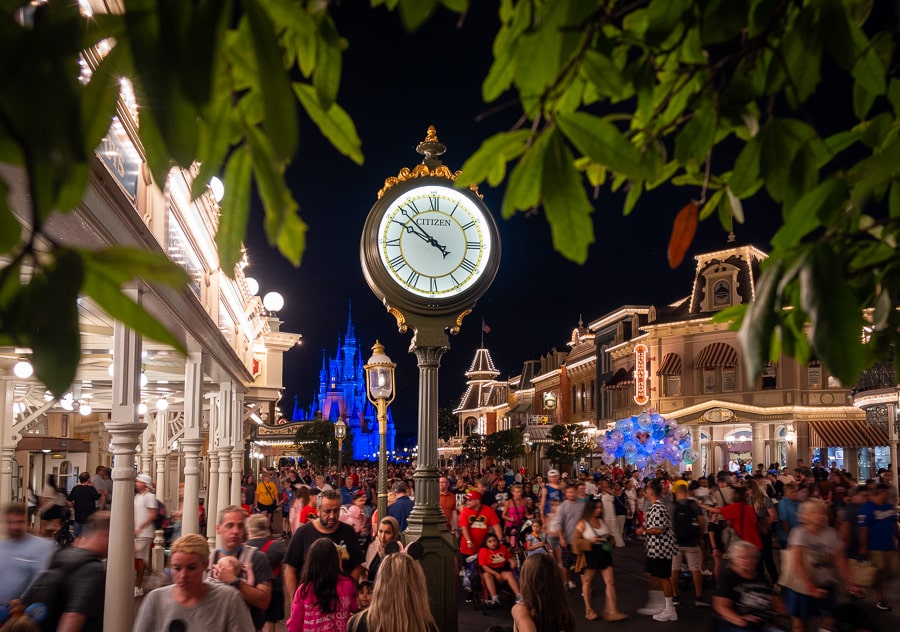
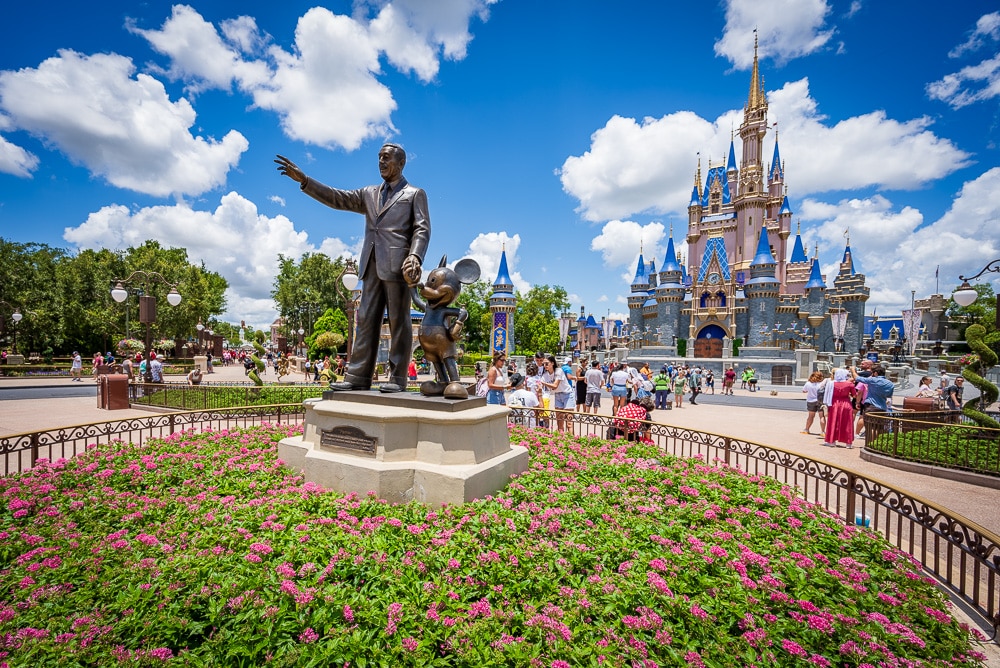

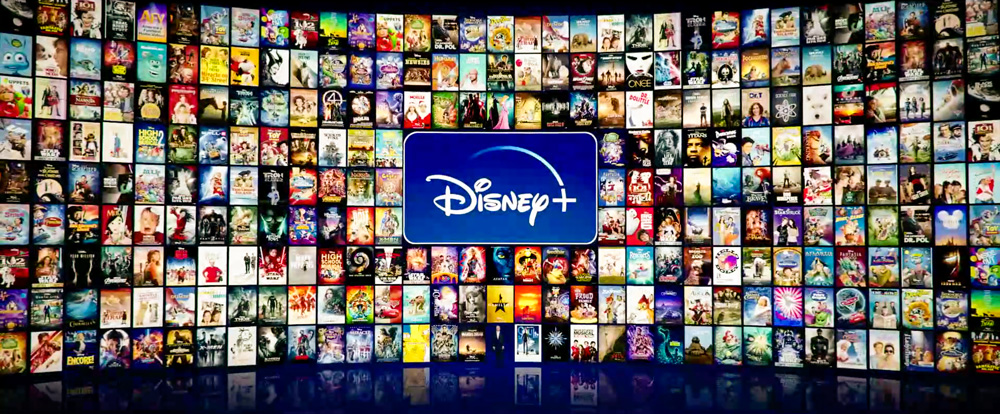



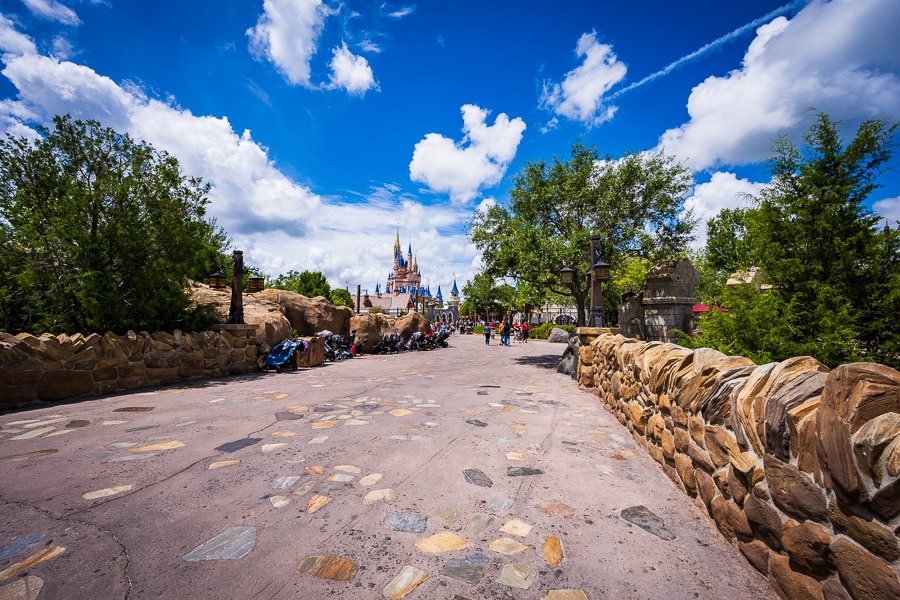
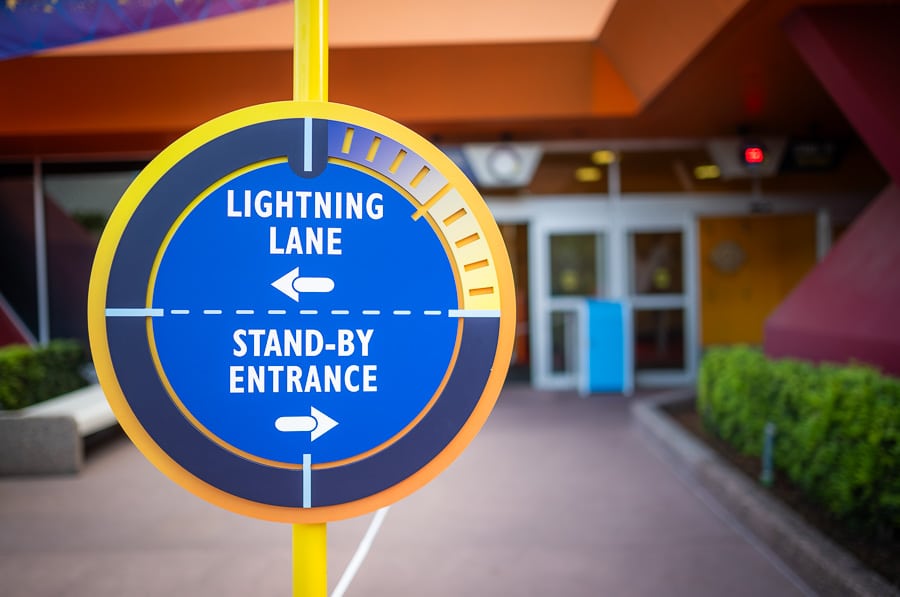

This is completely unrelated but I can’t wait for your 4+ Days at Disneyland itinerary.
When I’m wrong, I’ll say it. I was wrong and domestic Park attendance is lower. But this is good news for me.
Raising prices lowers Guest Satisfaction for some, lower crowds increases Guest Satisfaction for others. Lower crowd levels increase the likelihood that my family returns to the Parks more often…..when Genie+ / Lightening Lanes functionality improves.
Disney+ is on-track to be profitable. Good.
ESPN is finally making some big decisions that should increase future profit growth. Good.
DVC lower sales are likely a function of both red state / blue state politics & climate change. The political climate has impacted the numbers at the margins, since people from blue states are thought to be an outsized portion of DVC owners. Similarly, I’m guessing that recent increases in average summer temperatures has lowered summer demand from this same cohort of vacationers. My observation is that DVC resales point values have ‘softened’ in the past year too.
Regarding basic spending in the park, I was looking for the classic Mickey shirt but on a good fabric
Everything was poorly made and I was looking for something nostalgic.
Found nothing even though the pocketbook was willing to buy lots of well made shirts, sweatshirts, and whatever else caught my eye.
A real pity as I am positive there are others like me who would shell out money for classics.
We had the same experience as you Mike. We looked for classic t-shirt during our June trip and didn’t find any. We ended up buying a few Christmas decorations.
Given the aggressive discounting for so much of 2023, it almost seems like WDW would do well to drop some of their prices next year to make up for the huge increases they’ve charged since the pandemic and resulting revenge travel (coupled with household savings having increased thanks in part to stimulus checks) made it seem like WDW was never going to see the end of demand. Has WDW ever actually decreased rack rates and ticket prices from one year to the next?
I’m curious to see what discounts roll out next and how they compare to what’s currently available. We have a trip scheduled for mid-late January and are very much hoping for some good discounts since we splurged and reserved a 1BR at BWV. *fingers crossed*
If Disney is forced to buy the remaining Hulu shares, we likely won’t see major investment in the park until some of the debt is paid off, and Disney plus stops bleeding money. Or Disney could be wreck-less with its spending if epic universe takes a significant amount of market share
My husband and I were what one might call “Disney Freaks” for many years. We have been to CA and Hong Kong and mostly Disney World many times but now won’t go. I do not like having to walk around checking my phone all day. We both thought our last visit in 22 that no one was happy, especially cast members. I used Genie plus and had no rides the first day and limited other days. We use to get annual passes and visit often but they no longer are economical or available for non residents. So now we do Universal instead. Thumbs down to Disney!
“Elemental” is really a reboot of “My Big Fat Greek Wedding!” See if you see the similarities! And I enjoyed both movies 🙂
We opted to go to the Rocky Mountains in June. Avoided the heat, had great views, and no crowds. Always went to WDW for the June trip, done with that.
Brilliant idea. We are in the Rockies now and had a lovely overnight temp in the low sixties and should have a great hike when it hits 75 this afternoon. Can’t beat nature for a great holiday.
We are also seeing that we can go to Europe in the spring for less than the price of WDW.
Let’s hope
Looking forward to the annual visit to Disney from Michigan in 2024
I wonder if Disney is noticing that people are reining in the spending. We had a reservation at Caribbean Beach for mid-October. On Tuesday I got a cryptic email indicating I could call Disney for some special offer that turned out to be an upgrade to to the Royal Rooms at Port Orleans for about $10 a night or to Animal Kingdom Lodge for $100 more a night (we went for AKL). The staff members to whom I spoke had no idea what I was talking about until they entered the code. (Ultimately we’re paying very slightly less than the 25% off discount that dropped after I booked the trip originally, but still, will be fun). My guess is Disney is trying to move folks like me into the next tier accommodations because they feel better able to fill rooms at Caribbean Beach.
I too am not sold on Disney waiting to get a return off D+ just to green light any DisneyPark expansions. I always perplexed as to why ppl always compares the construction time with WDW attractions to Universal. Being a fan of both, it’s extremely obvious that, outside of some HP attentions, that Disney piles on an extensive amount of hair and makeup for their attractions vs Universal.
Mike, I totally agree. I normally do 2 days at universal and a week or more at Disney each trip. normally twice a year. They are both very different. But I hate seeing that Universal is building a new park in the time it takes Disney to do one ride. Its apples to oranges. I’ve watched Epic come to life down there, but they are simply ordering a ride, pouring the footings and calling it a day. Velocicoaster was the same way, great coaster, but not immersive. Now HP is but its one area of the park. I don’t ever recall a simple Disney attraction. The cost of GOTG was 10% of their entire new park. It’s just not the same. I still love Universal and will probably love Epic, but its not going to shorten my trips to Disney.
Maybe this is a dumb question, but what does Iger mean when he talks about taking ESPN direct to consumers? Is that not what ESPN+ is? The quote sounds like he is talking about a product that doesn’t exist.
ESPN+ still lacks a ton of the live events on the ESPN/ABC networks. Rights with the leagues are an absolute mess–I can’t believe they have figured all of that out by now.
I assume he’s just talking about rolling the live linear programming into ESPN+, probably with a new ‘live’ tier, since there’s no way the current cost structure for ESPN+ would support the pricey contracts with the leagues.
Streaming rights out takes new contracts or new modifications to existing contracts. The MLB and NFL contracts are new, but the current 9-year NBA contract runs through 2025. While in many cases that’s just a matter of time, in other cases the additional money is just not worth it for ESPN. For instance, given that ESPN has ACC college sports rights for cheap and *13 years* left on the contract, the ACC won’t come to the table at this point unless ESPN forks over more a lot more TV money.
I think Disney using Disney+ success as a ploy to develop the US parks is rubbish. If that is how they went into that business then someone needs to be fired. The parks have shown to be profitable and more than sustainable prior to streaming services. Unlike Tom, I will not pay more for less. They have already stripped the service of many newer shows with zero notice to subscribers. The parks in Florida can be used as an example where people are tired of paying more for less and have moved their money elsewhere. Media companies are dreaming if they think people will not revert to old ways of acquiring content, and they will not see a penny. Prices may never return to 2019 pricing but if they want to fill the parks again, they may need to rethink this. It boggles the mind how long it takes Disney to build new attractions. Universal makes them look silly in this regard.
I don’t know that I would call this a “ploy” given that Disney has never directly said that one is related to the other. It’s me saying that. Given Disney’s debt load, the bulk of which is a result of their foray into streaming, they need that to become sustainable before pivoting to the parks.
I’m not saying that I’ll pay more for less when it comes to streaming. We’ve already dropped services as costs have risen. But I knew from the outset that all of these streamers were unsustainable; it was a golden age of content for consumers and we enjoyed the ride, knowing it would end.
I think the heat is a strong factor for lower Walt Disney World attendance for alot of the summer of 2023. It isn’t the only factor, but I do believe its in the mix of reasons why. When Orlando is experiencing day after day of feels like temps at 110 in the shade, and higher, that impacts what people chose to do. I think it impacts out of towners plans to travel to WDW too. To some extent.
Maybe its just my family, but we rescheduled our September 2023 trip to November 2023 because of this heat dome. September has always been our favorite month to visit Disney World and its been very hot during that time of year on many of our past trips, but not like this year. This year temps are dangerously hot so we rebooked for later. I really don’t care for November crowds, but this year I felt we had to make a choice between the lesser of two evils, high crowds, or unrelenting heat.
It could just be my family, but the high temps scared us away this year. LOl.
I would’ve ‘debated’ this point back in early July when the heat was “only” slightly above average and the rest of the country was going through it, too. Now that it’s been continuing for longer and making more headlines, I’m inclined to agree that it’ll cause more people to reschedule.
Or maybe I’m suddenly biased because I just left EPCOT due to the 122 (!!!) degree “feels like” temperature. I couldn’t handle it anymore. I’ve been through some brutal summers in Florida, but that was the worst I’ve ever experienced!
Like they say, “A rising tide lifts all boats, and 1000 degree temperatures keeps everyone at home”. I’m in the Tampa Bay area and this summer has been nothing short of brutal. And it’s only early August.
I feel like the parks were significantly overcrowded the past few years in DW. It felt like they knew the crowd limits and just didn’t care that people would ultimately not enjoy themselves. When you stay at a deluxe resort but get nothing basically in return- pay for genie plus and still don’t get all the rides- top that with price hikes on absolutely everything, and people feel ripped off. At least my family has- maybe there are many who feel the same and decided not to overpay for less this year.
Case of 1, but maybe others have done the same – I took a Disney Cruise and Disneyland, CA trip instead of our usual trip to FL. It’s interesting that only Disney World attendance/occupancy is down, while the other US Disney destinations (cruises and Disneyland) are not. Surely a whole host of reasons drives this, but I made the choice to divert my spending away from the state of FL as a small way to send a message. It likely won’t be received, but I enjoyed my trips and felt good about it.
Tom already addressed this in previous posts. It was because Florida opened up much sooner than California (and the cruise lines) so revenge travel was completed earlier to WDW. Disneyland and the cruise lines will take a little longer for this to hit them. This is also why the international parks are doing “better”. It is because they were closed for so much longer. They are just now operating again so it is showing a spike overseas.
Thanks, Laura. Great reminder, and certainly another factor driving what is happening. It’s not the reason I skipped my Disney World trip this year (and will skip again next), and I know of several others who have done the same. I’m certainly not saying this is the main or only driver, but I can say it is a factor.
I did exactly the same thing – April 2023 Disney Cruise and July 2023 Disneyland trip. I will not be going back to Florida for the foreseeable future and we are now eyeing international trips for 2024.
Same! My last 3 Disney trips were to DL, as opposed to WDW, even if the flight from Montreal is 6 hours instead of 3hrs15. Of course I’ll eventually go back to FL but for now, I’m happy to spend my tourist dollars elsewhere. It’s a refreshing change of pace.
The headline is that Disney+ lost roughly 11.7 million subscribers worldwide for a new total of 146.1 million.
Since, almost everyone, who got a cellphone from Verizon also got a subscription to Disney+ their numbers were most certainly inflated from the get go. A large number of those people who got the subscription for “free” certainly did not continue the subscription once they were made to pay for it.
Yep, and don’t forget the deeply-discounted Disney+ 3-year subscriptions offered at the 2019 D23 Expo.
No surprise that total revenue is increasing even as subscriber counts drop.
Do you think that the significant “pivot to the parks” at Walt Disney world will almost necessarily have to wait til construction crews are freed up from work on epic universe so that they can get large amounts of crews at better prices? I’ve often wondered if the ridiculous delays at Epcot and tron were caused by having to compete for labor with epic universe. I could be way off in my assessment.
This is a very interesting point! I hadn’t thought of it before but it makes sense; there’s only so many people with previous experience constructing theme park lands, that combined with some people retiring/leaving the industry during the pandemic shutdown could be causing a labor shortage.
Even if that’s the case I don’t have a ton of sympathy for Disney though; they knew Epic Universe was coming, and they didn’t have to pause all construction while the parks were closed (before Universal really ramped up construction).
This is definitely a big part of it, but it’s not just Epic Universe. There’s a ton of construction all over Central Florida (and probably beyond, but that’s not my area of expertise), and many these projects are all competing for the same, limited labor pool. Obviously, there are some components of parks projects that require specialized knowledge and skills, but I’d imagine a lot of it comes down to generalized construction workers. I’m not sure what the immigration ‘situation’ is right now, but that was also hurting things relatively recently.
(I’m also curious how far Universal is going over budget on Epic Universe due to rising costs. I cannot imagine their original estimates are even remotely accurate now; I don’t pay close enough attention to see whether they’ve publicly revised the CapEx projections during earnings calls.)
I’m heading there in mid September and I decided to add 2 days on my trip (with a 30 day lead I knew it would be slim) but very little was available for a thurs-sat stay. Mostly 1-2 bedroom suites and villas. I ended up with the French Quarter, which I’ve never done and may enjoy. But even with the discount I’m paying a bit much for it.
I tried renting DVC 1st, and they had zero inventory for a studio 2 days in a row. So for those 2 days anyway, DVC is booked.
Leads me to believe that the WDW resorts are mostly full for one of the slowest weeks of the year. But I keep hearing about low crowds and attendance in the resorts being down. Maybe they don’t release all the rooms in slower times, but if they have a drop in resort stays, why would they do that? I guess refurbishments could also be a factor?
I can’t help but wonder if some of the slow down at WDW is the lack of new attractions in a timely manner. It bugs me watching the other parks get newly themed or new attractions all together in a relatively quick amount of time. It almost makes me want to go across the country to California! Why so slow progress WDW?!